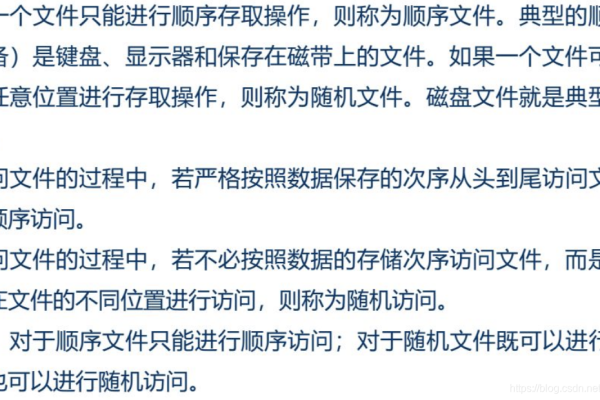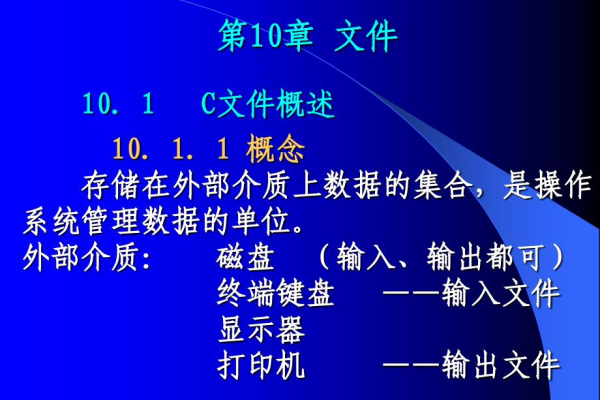C文件读取后存储,操作细节与注意事项?
- 行业动态
- 2025-03-04
- 10
“
c,#include,#includeint main() {, FILE fp1, fp2;, char ch; fp1 = fopen("source.txt", "r");, if (fp1 == NULL) {, perror("Error opening source file");, return EXIT_FAILURE;, } fp2 = fopen("destination.txt", "w");, if (fp2 == NULL) {, perror("Error opening destination file");, fclose(fp1);, return EXIT_FAILURE;, } while ((ch = fgetc(fp1)) != EOF) {, fputc(ch, fp2);, } fclose(fp1);, fclose(fp2); printf("File has been copied successfully.,");, return EXIT_SUCCESS;,},“
在C语言中,文件读取和存储是常见的操作,涉及到对文件的打开、读取、处理以及关闭等步骤,以下是一个详细的指南,介绍如何在C语言中读取文件内容并将其存储到另一个文件中。
包含必要的头文件
需要包含标准输入输出库stdio.h,它提供了文件操作相关的函数声明。
#include <stdio.h>
打开源文件
使用fopen()函数以只读模式("r")打开要读取的文件,如果文件不存在或无法打开,fopen()将返回NULL。
FILE sourceFile = fopen("source.txt", "r");
if (sourceFile == NULL) {
perror("Error opening source file");
return -1;
}
创建目标文件
同样使用fopen(),但这次是以写入模式("w")打开或创建一个新文件,用于存储读取的数据。

FILE destinationFile = fopen("destination.txt", "w");
if (destinationFile == NULL) {
perror("Error opening destination file");
fclose(sourceFile); // 记得关闭已打开的源文件
return -1;
}
读取并写入文件
通过一个循环,从源文件读取数据块(比如一行或固定大小的数据块),然后立即写入目标文件,这里以读取单字符为例,直到遇到文件结束标志EOF。
char ch;
while ((ch = fgetc(sourceFile)) != EOF) {
fputc(ch, destinationFile);
}
关闭文件
完成读写操作后,务必使用fclose()函数关闭两个文件,以释放系统资源。
fclose(sourceFile); fclose(destinationFile);
完整示例代码
将上述步骤整合,得到一个完整的程序:

#include <stdio.h>
int main() {
FILE sourceFile = fopen("source.txt", "r");
if (sourceFile == NULL) {
perror("Error opening source file");
return -1;
}
FILE destinationFile = fopen("destination.txt", "w");
if (destinationFile == NULL) {
perror("Error opening destination file");
fclose(sourceFile);
return -1;
}
char ch;
while ((ch = fgetc(sourceFile)) != EOF) {
fputc(ch, destinationFile);
}
fclose(sourceFile);
fclose(destinationFile);
printf("File has been copied successfully.
");
return 0;
}
FAQs
Q1: 如果源文件很大,一次性读取整个文件到内存中是否可行?
A1: 对于非常大的文件,一次性读取到内存可能会导致内存不足的问题,建议采用分块读取的方式,比如每次读取固定大小的数据块,这样可以避免占用过多内存,并且适用于各种大小的文件。
Q2: 如何处理读取或写入过程中的错误?

A2: 在实际应用中,应当检查每次文件操作(如fopen(),fgetc(),fputc(),fclose())的返回值,以检测并处理可能的错误,如果fgetc()返回EOF之前遇到了错误,应该立即停止处理并报告错误,确保在任何错误发生时正确关闭已打开的文件描述符,避免资源泄露。









